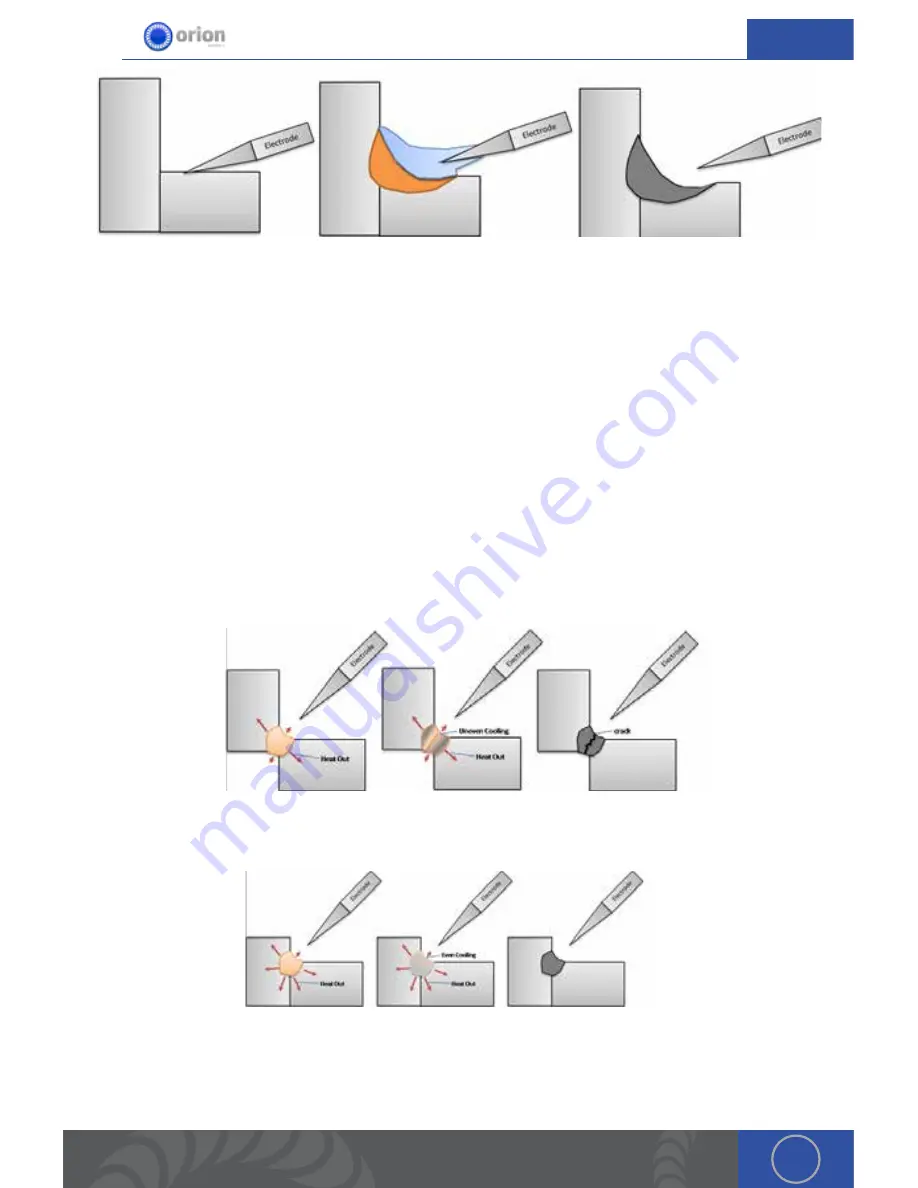
41
OrionWelders.com
ch
.
6
In this example the vertical member is more heat sensitive or is thinner than the horizontal
member. Material is pushed from the horizontal member onto the vertical member to prevent
part damage.
Pulse Arc Welding: Weld Cracking
Some materials are prone to crack because of their metal properties . For example, High Carbon
steel, Palladium (Pd), and some silver alloys . Why does the cracking take place? With some
metals it is the new crystal structure created during the welding process e .g . palladium and high
carbon steel . However, another cracking process often called “hot cracking” can occur when the
cooling process and the resulting thermal shrinkage create high stresses in the work piece . Hot
cracking is very geometry dependent and can be avoided by carefully considering the weld joint
before welding .
Ideas to overcome hot cracking:
1 . Keep joint gaps as small as possible .
2 . Keep the Weld Time/Duration at “Long” to help ramp down the heat more gradually .
Improper joint preparation or geometry can lead to uneven weld puddle cooling. If the puddle
cools in such a way to create a hot center section the hot section will be pulled apart by the
stresses from the cooling out metal.
A proper weld joint will help the weld puddle cool uniformly. This will allow even stresses within
the weld puddle and prevent weld cracking.
Palladium and high carbon steel cracking is a special case and is difficult to overcome when laser
or Pulse Arc welding . If only one weld spot is made, cracking will typically not occur unless the
















































